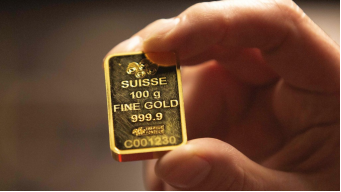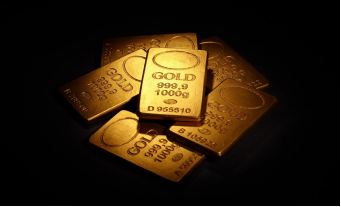Minutes of the Fed's meeting showed that at the next two meetings, each rate hike of 50 basis points may be appropriate. A sharp rate hike would provide policy flexibility later this year. The Fed's swaps show that the Fed will raise interest rates by about 98 basis points in the next two meetings. The Fed's interest rate hike expectations have cooled, the support for the dollar has weakened, and the short-term pressure on gold will also cool.
Is the Fed ready to "pivot"?
At the Fed monetary policy meeting, the Fed policymakers emphasized the need to raise interest rates quickly to curb inflation, which may exceed market expectations, believing that it is necessary to raise interest rates by 50 basis points at the latest two meetings in June and July this year. When discussing the U.S. economic outlook, the minutes mentioned that the Fed officials believed that monetary policy may have to exceed a neutral level that neither supports nor restricts. , focused on bringing inflation back to the Committee's target of 2 percent while maintaining a strong labor market environment.
In fact, the Fed has not only signaled interest rate hikes, but also hinted at its end point. In response to the minutes mentioned in the minutes, “Federal bank policymakers emphasized the need to raise interest rates quickly to curb inflation, which may exceed market expectations, and believe that it is necessary to raise interest rates in June and this year. The last two meetings in July raised interest rates by 50 basis points,” and the minutes also pointed out that “a restrictive policy stance may become appropriate given the changing economic outlook and risks to the outlook.”
In addition, the minutes showed that Fed staff updated their inflation expectations for personal consumption expenditures (PCE), which was viewed by comments as a major signal from the Fed about when the rate hike might end, given the slow easing of supply chain tensions in the first half of the year, while This has led to expectations of higher import prices, for which they raised their PCE price inflation forecasts slightly for the second half of this year and next year, with rising wages putting more upward pressure on service prices than previously expected
If the above PCE forecasts are accurate, it would imply that three more 50 basis point rate hikes would end the current tightening cycle by the Fed, paving the way for a major risk backlash in the second half of the year, which began at the Fed meeting earlier this month. Since then, the market expects that the probability of the Fed raising interest rates in September has dropped sharply, from 80% to less than 40%. In this regard, JPMorgan strategists believe that September may be a critical time for the Fed to turn, as three more CPI announcements will be released at that time to prove whether inflation has really slowed as Fed Chairman Powell thinks it needs to be.
Inflation 'ferocious' to disrupt economy
Recently, Federal Reserve Chairman Jerome Powell has been criticized and accused of slow action after successfully opening a second term but not successfully controlling inflation. Powell announced a new framework in August 2020, the "flexible average inflation target" ”, the new framework maintains the Fed’s 2% inflation target but makes two key changes.
First, the FOMC agreed to work to make up for past undershoots of the inflation target. If inflation is below 2% for a period of time, as it has been for most of the past decade, the FOMC will compensate by allowing inflation to be "moderately above 2% for a period of time," the purpose of which is to demonstrate that the target is Symmetrically, inflation does not stay below or above target for long.
Second, the FMOC will no longer attempt to counter an overheated labor market by tightening policy, as it has in the past, thereby preventing inflationary pressures from rising even when real inflation is not rising. Under the new framework, the FOMC abandoned a "pre-emptive strike" on inflation. Conversely, to avoid inadvertently stifling the job market recovery, an overheated labor market alone is not enough reason to tighten, as long as inflation can be contained.
Last year and this year, inflation that was too high, not too low, became the main issue for the FOMC to address. Some influential economists, including former U.S. Treasury Secretary Summers and former International Monetary Fund chief economist Blanchard, expressed early on that strong fiscal stimulus and loose monetary policy would lead to Concerns about overheating of the economy. Infinitely accommodative monetary policy would either lead to a return to the stagflation of the 1970s, or to hastily tightened monetary policy by the Federal Reserve, disrupting the economy and markets.
Last year, the FOMC became increasingly concerned about inflation, but the Fed did not announce a tapering of bond purchases until November, and did not raise interest rates for the first time by 25 basis points until March this year. In May, the FOMC raised its policy rate by another 50 basis points and announced plans to shrink its balance sheet. A tightening campaign is intensifying as the Fed focuses on inflation. However, looking back, some Fed policymakers and many economists agree that early action should be taken to curb inflation.
Gold prices may shine
The Fed is grappling with how best to steer the economy toward low inflation without causing a recession or driving up unemployment significantly, but the task appears to be proving challenging.
Minutes of the Fed's May meeting noted that the economy remains strong and households are doing well, making it more difficult for them to stop spending and ease price pressures. And supply chain bottlenecks "remain serious", companies are still struggling to recruit, and their ability to meet demand is still limited, which is why prices continue to rise.
Uncertain when the situation will ease, officials have begun to take a broad stance on the likely effect of a sharp rise in interest rates. If the Fed wants to slow down the pace of tightening in the second half of the year, it will leave some leeway for future monetary policy tightening.
Federal Reserve officials worry that their firm determination to tighten monetary policy to suppress inflation could destabilize U.S. Treasury and commodity markets. Specifically, the minutes warned: "The trading and risk management practices of some of the major players in commodity markets are not fully visible to supervisory authorities."
The U.S. dollar index rose to 105 this month, hitting a new high in nearly two decades, but there are signs that the Fed's aggressive water withdrawal may have had a negative impact on the economic outlook, prompting traders to scale back their bullish expectations for the dollar.
The Fed will raise interest rates two more times by 0.5 percentage points each and then wait and see the economic impact, which is good for gold, in the long run, investors know that a recession is imminent, they are looking for safe-haven assets, and gold will shine.
 2022-05-27
2022-05-27
 1061
1061






 简体中文
简体中文
 ภาษาไทย
ภาษาไทย
 繁體中文
繁體中文
 Indonesia
Indonesia











